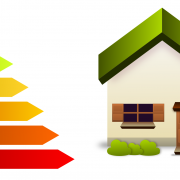CIR 12/20 | Transposition of EU Directive 2018/844
Two new Legal Notices have been recently published to transpose Directive (EU) 2018/844 on the energy performance of buildings and on energy efficiency.
LN133 of 2020_Energy Efficiency and Cogeneration (Amendment) Regulations, 2020
This Legal Notice obliges the Building Regulation Board to issue a long-term strategy for mobilising investment in the renovation of buildings, and to update such strategy every three years.
LN134 of 2020_Energy Performance of Buildings (Amendment) Regulations, 2020
This Legal Notice amends the Energy Performance of Buildings Regulations to bring them in line with Directive (EU) 2018/844. There are a number of changes that relate mainly to building engineering services, and it is recommended that you advise your clients and their consulting services engineers of the contents of these new regulations in so far as they are applicable to your projects.
It also obliges the Building Regulation Board to “establish a long-term renovation strategy to support the renovation of the national stock of residential and non-residential buildings, both public and private, into a highly energy efficient and decarbonised building stock by 2050, facilitating the cost-effective transformation of existing buildings into nearly zero-energy buildings.” Furthermore it obliges the Building Regulation Office to undertake various provisions for financial assistance to improve energy performance of buildings and to establish regular inspections of heating and air-conditioning systems.
Two new Regulations of particular relevance to periti are Regulation 5(5) and Regulation 5(10) which stipulate that:
5(5) “New non-residential buildings and non-residential buildings undergoing major renovation, with more than ten parking spaces, shall be installed with at least one recharging point within the meaning of Directive 2014/94/EU of the European Parliament and of the Council and ducting infrastructure, namely conduits for electric cables, for at least one in every five parking spaces to enable the installation at a later stage of recharging points for electric vehicles where:
(a) the car park is located inside the building, and, for major renovations, renovation measures include the car park or the electrical infrastructure of the building; or
(b) the car park is physically adjacent to the building, and, for major renovations, renovation measures include the car park or the electrical infrastructure of the car park.”
5(10) “New residential buildings and residential buildings undergoing major renovation, with more than ten parking spaces, shall be installed with ducting infrastructure, namely conduits for electric cables, for every parking space to enable the installation, at a later stage, of recharging points for electric vehicles, where:
(a) the car park is located inside the building, and, for major renovations, renovation measures include the car park or the electric infrastructure of the building; or
(b) the car park is physically adjacent to the building, and, for major renovations, renovation measures include the car park or the electrical infrastructure of the car park.”
Although the Legal Notice gives power to the Minister to exempt certain types of buildings, no such exemptions have as yet been issued, and therefore these Regulations are considered applicable to all situations as outlined above. One of the situations contemplated in the Regulations where the Minister may issue exemptions concerns those building where the relevant applications have been submitted prior to 10 March 2021. The Kamra will be corresponding with the Minister to apply such exemption in order to allow the market to adjust accordingly, however until then the provisions of the regulations must be implemented.
Regulation 9 includes an obligation on EPC assessors to “provide information to the owners or tenants of buildings on energy performance certificates, including their purpose and objectives, on cost-effective measures and, where appropriate, financial instruments, to improve the energy performance of the building, and on replacing fossil fuel boilers with more sustainable alternatives.”
While trusting that you will peruse the new regulations, please do not hesitate to contact the Kamra tal-Periti through email on buildingregs@kamratalperiti.org should you have any queries.
Yours sincerely,
Simone Vella Lenicker
President








